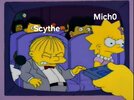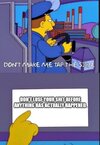Scythe94
Moderator
- Moderator
- #1
Confirmed outs:
- Alex Neal-Bullen (Traded to Adelaide)
- Angus Brayshaw (Retired)
- Ben Brown (Retired)
- Lachie Hunter (Retired)
- Josh Schache (Delisted)
- Kyah Farris-White (Delisted)
- Future First (Traded to Essendon)
- Future Third (Traded to Adelaide)
- Picks 40, 54, 65 (Traded to Essendon)
- Tom Campbell (Free Agent from St Kilda)
- Pick 9 (Traded from Essendon)
- Future Third (Traded from Essendon)
- Pick 28 (from Adelaide, to Essendon)
- Pick 46 (from Adelaide, to Essendon)
Last edited:












